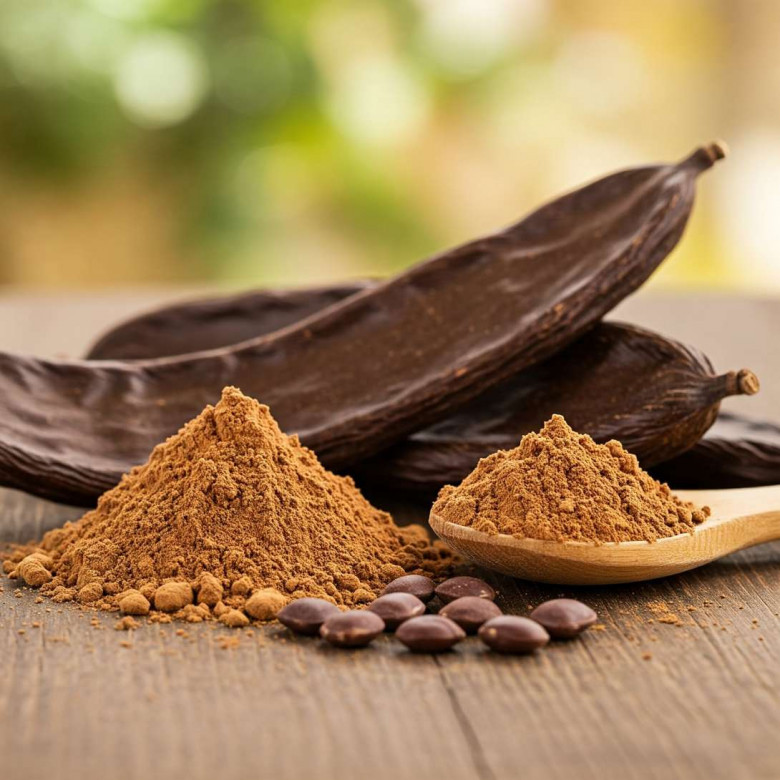views
Carob Powder Market Overview: Unlocking the Potential of a Cocoa Alternative
As global dietary habits continue to evolve, lesser-known ingredients like carob powder are stepping into the spotlight. Once primarily used in regional Mediterranean cuisines, carob is now gaining international traction as a functional, plant-based ingredient that aligns with several contemporary consumer trends. This article delves into a current, comprehensive overview of the carob powder market, focusing on its growing commercial value, sector-specific uses, and potential for future expansion.
🌍 What is Carob Powder?
Carob powder is made by grinding the dried pods of the carob tree (Ceratonia siliqua), a leguminous plant native to the Mediterranean basin. Known for its naturally sweet taste and absence of caffeine and theobromine, carob is often viewed as a chocolate alternative—but it’s more than just a cocoa replacement. It’s a nutritious, sustainable, and allergen-friendly ingredient with a growing list of applications across industries

📊 Market Growth and Projections
The global carob powder market has seen steady expansion over the past five years and is projected to maintain a healthy compound annual growth rate (CAGR) through 2030. The key markets include Europe, North America, and the Asia-Pacific region, each of which is responding to different drivers.
-
Europe leads in production and domestic consumption, thanks to the long-standing cultivation of carob trees in Spain, Italy, and Greece.
-
North America is seeing a rise in demand from the organic and health food sectors.
-
Asia-Pacific is emerging as a fast-growing consumer base, especially in urban markets where Western wellness trends are becoming influential.
🍫 Key Industry Drivers
1. Rising Demand for Cocoa Alternatives
With ongoing concerns about the sustainability and ethics of cocoa production—particularly regarding deforestation and child labor—many food producers are exploring alternatives. Carob powder, which grows on hardy trees with low environmental impact, presents a viable option.
2. Nutritional Superiority
Carob powder is rich in dietary fiber, calcium, and polyphenols. It is low in fat, contains no stimulants, and has a naturally sweet flavor, reducing the need for added sugars. These features make it appealing to consumers focused on gut health, cardiovascular wellness, and balanced diets.
3. Inclusion in Functional Foods
Modern consumers are leaning toward products that not only taste good but also offer functional health benefits. Carob is being incorporated into protein powders, snack bars, fortified cereals, and even gut-health beverages.
🛠️ Applications Across Sectors
Carob powder’s versatility has allowed it to cross into several industries:
-
Food & Beverage: Used in baked goods, milk alternatives, baby food, spreads, and syrups.
-
Nutraceuticals: Emerging as a gut-friendly fiber source in supplements and health tonics.
-
Cosmetics: Its antioxidant content makes it suitable for inclusion in skincare and anti-aging products.
-
Pet Food: Safe and non-toxic to animals, carob is gaining popularity in premium dog treats and natural pet nutrition products.
🏭 Supply Chain and Production Insights
Carob cultivation primarily takes place in Mediterranean climates, where the tree thrives in dry, rugged terrain. The yield is less vulnerable to pests and diseases compared to cocoa, making it more reliable in the face of climate variability.
However, one of the current bottlenecks in market expansion is limited production volume. Unlike cocoa or soy, carob is not yet farmed on a mass scale. Efforts are underway in countries like Australia and Morocco to increase commercial cultivation and address this gap.
🚧 Challenges Facing the Market
Despite its promise, several challenges remain:
-
Consumer Awareness: Many consumers are still unfamiliar with carob’s benefits or how to use it in everyday meals.
-
Taste Preferences: Carob's unique flavor—often described as earthy or nutty—is different from cocoa and may not appeal to all consumers expecting a direct chocolate replica.
-
Supply Chain Limitations: Inconsistent supply volumes and regional sourcing challenges can lead to price fluctuations.
🔮 Future Outlook
Looking forward, the carob powder market is expected to benefit from continued investments in:
-
Product development, especially in the snack and beverage categories
-
Agricultural innovation, including the use of improved cultivars and more efficient processing techniques
-
Consumer education, which will help raise awareness about the health and sustainability advantages of carob
Tech-savvy, health-aware, and eco-conscious consumers are driving a new wave of demand for alternative ingredients, and carob powder stands to gain substantially.
✅ Conclusion
The carob powder market is in a pivotal phase of transformation. With rising concerns over conventional ingredients, carob is no longer a fringe product—it is becoming a mainstream choice for brands and consumers alike. As innovations in product development and sourcing continue to evolve, carob powder is poised to become a key player in the future of natural, functional, and sustainable food systems.























Comments
0 comment